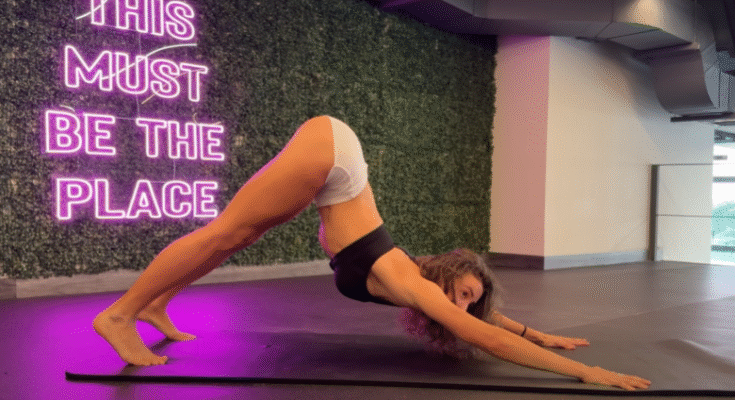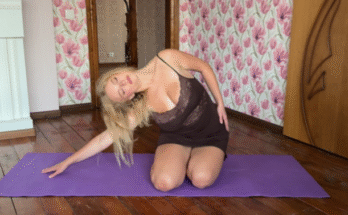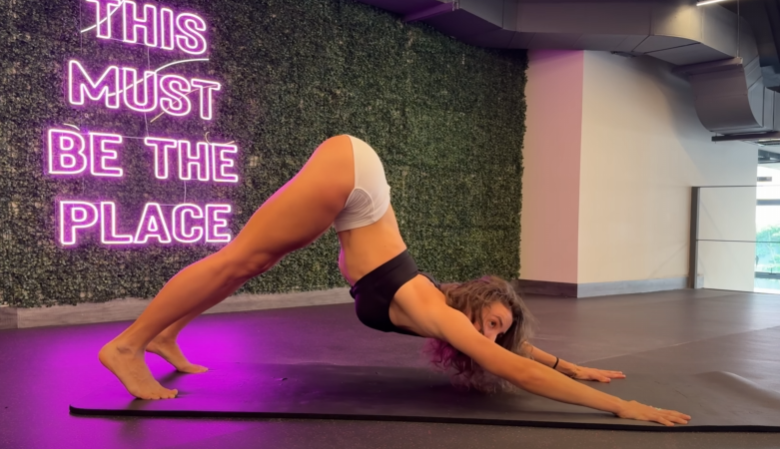
Every great workout begins with one essential step — a proper warm-up. For fitness enthusiast Chebyjane, warming up isn’t just a physical preparation; it’s a mindful ritual, a moment to connect body and mind before facing the weights, machines, or high-intensity routines that await. It’s the bridge between rest and performance, helping muscles awaken, joints loosen, and energy flow freely.
In today’s world of fast-paced gym culture, many people skip this crucial stage, diving straight into heavy exercises. But as Chebyjane reminds her followers, “A good warm-up isn’t wasted time; it’s an investment in performance and safety.” Her stretching routine has become a model for athletes and beginners alike — simple, effective, and deeply connected to the body’s natural rhythm.
The Purpose of Warm-Up Stretching
Warm-up stretching isn’t about pushing flexibility to its limit. Instead, it’s a gentle activation of muscles, gradually increasing blood flow, heart rate, and mobility. It’s designed to prepare your body for the upcoming workload, reducing the risk of injury.
Chebyjane often says that the body is like an instrument — you wouldn’t start playing it at full volume without tuning it first. The same applies to your muscles and joints. By stretching before a workout, you allow your body to adapt from a static state to a dynamic one, ready to move powerfully and gracefully.
Moreover, warming up has psychological benefits. It helps shift your focus from the day’s stress toward your physical goals. The moment your breath deepens and your muscles start to feel alive, you mentally enter the “gym zone” — a state of confidence and readiness.
Phase 1: Light Cardio Activation
Chebyjane’s warm-up routine always begins with light movement to get the blood pumping. She spends five minutes doing low-intensity cardio: jogging in place, skipping rope, or brisk walking on the treadmill. The goal is not to sweat excessively but to gently raise the heart rate and increase circulation to major muscle groups.
Once her breathing deepens, she transitions into rhythmic joint movements. Rolling her shoulders, twisting her torso, and rotating her hips — she performs each motion slowly, with control and awareness.
These small movements help lubricate the joints and prepare them for dynamic stretches. As she moves, she smiles, letting the music guide her rhythm. The warm-up becomes a dance, a flow, a prelude to something powerful.
Phase 2: Dynamic Stretching – Waking Up the Body
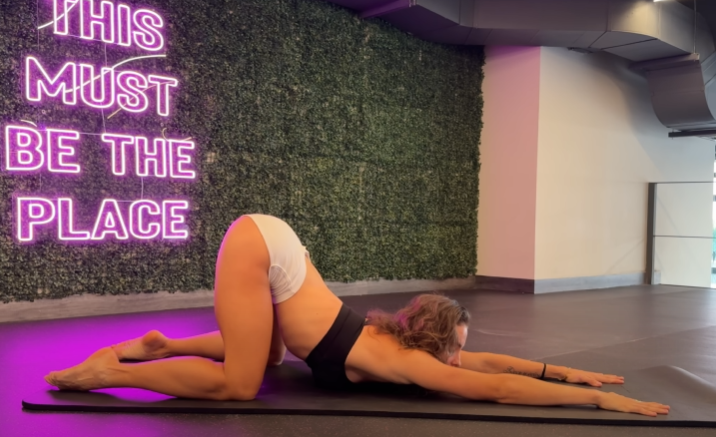
Static stretching — where you hold a position for several seconds — is more effective after a workout. Before training, dynamic stretching is the key. This method involves continuous, controlled movements that extend muscles and joints through their full range of motion.
Here’s how Chebyjane structures this part of her warm-up:
- Arm Circles (30 seconds each direction):
With her arms extended to the sides, she draws large circles in the air, gradually increasing their size. This activates the shoulders and upper back — crucial for any pushing or pulling workout. - Torso Twists (20 reps):
Standing tall, she gently rotates her torso side to side, engaging her core. This movement warms the spine, improves posture, and enhances mobility for exercises like squats and deadlifts. - Hip Circles (10 each direction):
With hands on her hips, she draws big circles, loosening the hip joints. This not only prepares the lower body but also engages the stabilizing muscles that protect the spine. - Leg Swings (15 forward-back, 15 side-to-side):
Holding onto a stable surface, she swings one leg at a time. The forward-back motion activates the hamstrings and hip flexors, while the side-to-side motion works the inner and outer thighs. - Walking Lunges (10 reps per side):
A full-body move that stretches the quads, glutes, and hips while also improving balance. Chebyjane emphasizes control — no rushing, just breathing through the stretch. - Inchworm Walkouts (8 reps):
Starting from a standing position, she bends down to walk her hands forward into a plank, then walks them back. This move engages the shoulders, core, and hamstrings while gently stretching the entire body.
Each movement flows seamlessly into the next, creating a graceful routine that lasts around ten minutes. The goal is to feel warmth in the body, a gentle pulse of readiness coursing through the muscles.
Phase 3: Targeted Stretching for Specific Workouts
Depending on her training focus for the day, Chebyjane tailors her stretches to specific muscle groups.
- For Leg Day: She focuses on dynamic lunges, leg swings, and bodyweight squats to prepare her glutes, quads, and hamstrings.
- For Upper Body Day: Shoulder rolls, chest openers, and band pull-aparts help loosen tight muscles and improve shoulder mobility.
- For Core or HIIT Sessions: She performs cat-cow stretches, torso rotations, and side bends to activate the abdominal area and spine.
By aligning the warm-up with the day’s routine, she ensures that every movement counts — no muscle goes unprepared.
Breath and Mindfulness in Motion
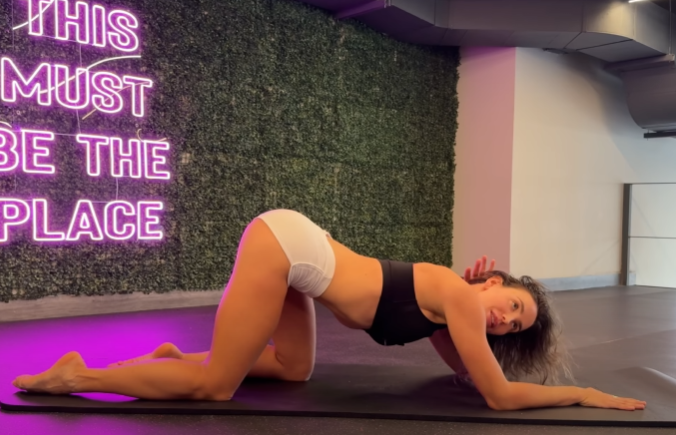
What sets Chebyjane apart is her emphasis on breathing and awareness. She never rushes her warm-up. Each stretch is paired with deep, steady breaths — inhale to lengthen, exhale to deepen.
This mindful breathing calms the nervous system, balancing energy and focus. As she moves, she often whispers affirmations: “Strong today. Aligned today. Ready today.”
These quiet words set the tone for her workout, transforming a simple warm-up into a grounding ritual. It’s not just about physical flexibility — it’s about emotional readiness. The gym becomes a sanctuary, and the stretch becomes her prayer.
Common Mistakes People Make Before Workouts
While warm-up stretching seems simple, many people either skip it or perform it incorrectly. Chebyjane frequently educates her audience on avoiding these pitfalls:
- Skipping the warm-up entirely: Going straight into intense lifting or cardio without priming your body increases the risk of strain or injury.
- Static stretching before lifting: Holding long stretches before strength training can actually reduce muscle power and performance.
- Rushing through movements: The warm-up should be intentional and mindful, not a checklist to rush through.
- Ignoring smaller muscles: Areas like wrists, ankles, and neck also need gentle movement before workouts.
By understanding these mistakes, gym-goers can adopt a safer, more effective routine — one that mirrors Chebyjane’s thoughtful approach.
Cooling Down the Right Way
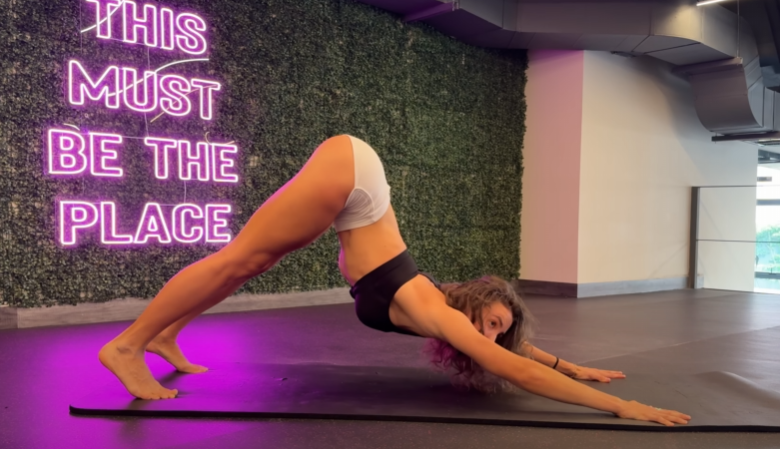
Though this story centers on pre-gym stretching, Chebyjane always reminds her audience that cooling down is equally vital. After every workout, she repeats slower, deeper versions of her stretches. This aids muscle recovery, reduces soreness, and helps her body transition back to a calm state.
She sees this closing stretch as a reflection — a time to thank her body for its effort. It’s where physical training meets gratitude.
The Power of Routine and Self-Discipline
For Chebyjane, warming up is not just part of fitness — it’s part of her identity. It’s where her discipline, care, and respect for her body shine through. Even on days when she feels tired or unmotivated, she never skips it.
The warm-up becomes her spark. Once she begins moving, energy returns. The stiffness fades. The music kicks in, and soon she’s lost in motion, smiling at the mirror, her reflection glowing with determination.
“Every rep, every stretch,” she says, “is a love letter to the body that carries you.”
Conclusion
Warm-up Stretching Before Gym isn’t just a physical act — it’s a mindset. Through her example, Chebyjane shows that taking ten minutes to prepare can transform not only your performance but your entire relationship with fitness.
A proper warm-up sets the foundation for strength, prevents injury, and connects you to your inner rhythm. It’s the key to unlocking your body’s potential safely and effectively.
So, next time you step into the gym, remember Chebyjane’s mantra:
“Don’t just train hard — train smart. Respect your body. Start with warmth.”
Because every great workout doesn’t start with sweat — it starts with stretch, breath, and intention.
